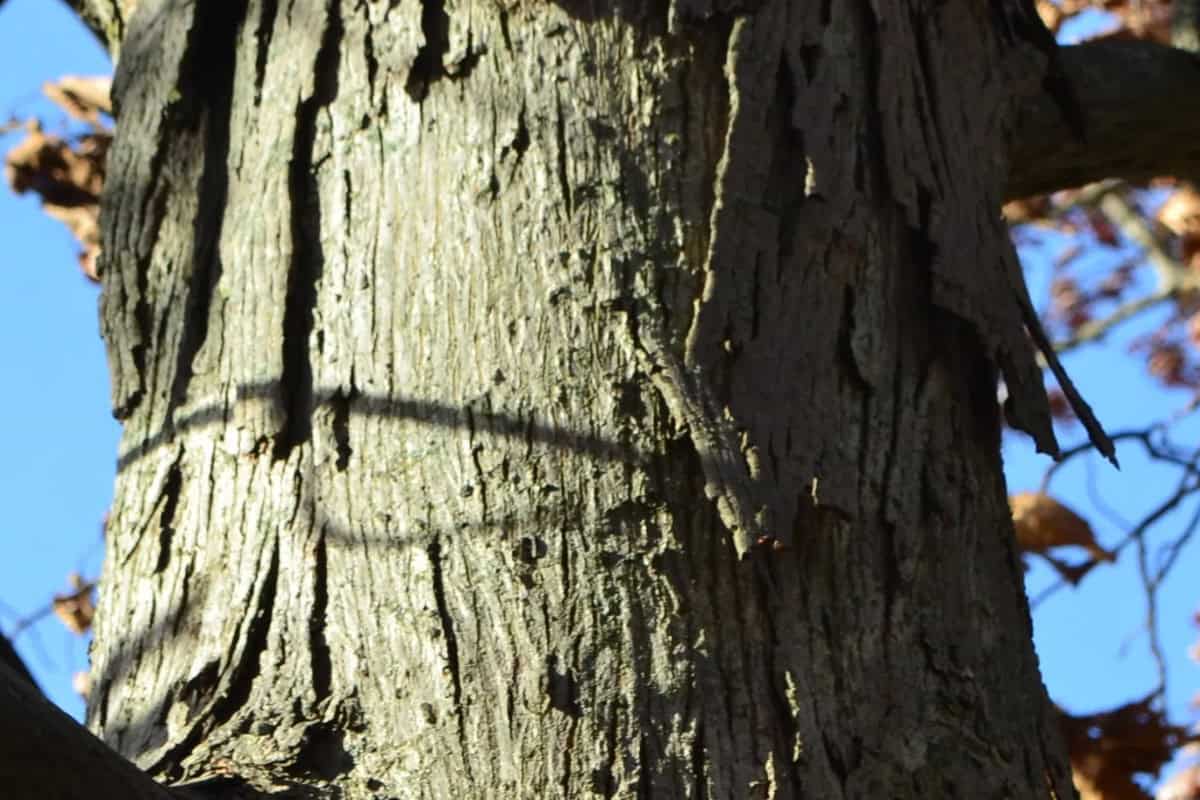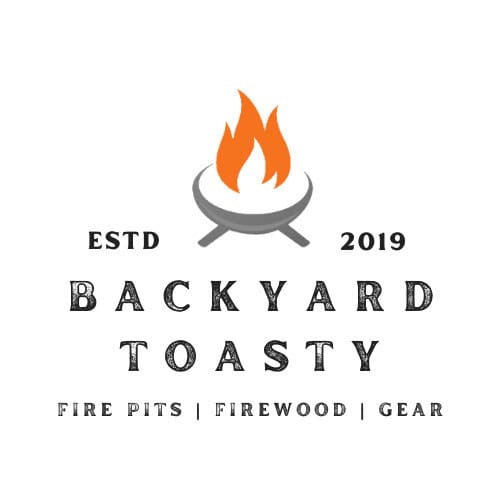
This comprehensive Pignut Hickory firewood profile examines the workhorse of the hickory family, delivering a solid 28,600 BTUs per cord with dependable burning characteristics.
Pignut hickory offers excellent value for fire pit enthusiasts who want premium hickory performance without the premium pricing, making it the perfect choice for those seeking quality heat and flavor at a more accessible price point.
Quick Reference Stats
- Wood Type: Hardwood
- BTU Rating: 28,600 BTUs per cord
- Ease of Splitting: Moderate (3/5 scale)
- Seasoning Time: 12-18 months
- Smoke Production: Low
- Spark/Pop Factor: Moderate
- Scent Profile: Pleasant – Classic hickory aroma with mild smoky notes
Overview & Identification
Pignut Hickory represents the reliable backbone of America’s hickory firewood supply. This dependable hardwood delivers consistently excellent heat output while providing that classic hickory character without the premium price tag. For practical fire pit enthusiasts who want proven performance and widespread availability, Pignut offers the perfect balance of quality and value.
Common Names: Pignut Hickory, Red Hickory, Sweet Pignut, Coast Pignut Hickory
Scientific Name: Carya glabra
Tree Characteristics: Medium to large tree reaching 50-75 feet tall. Features relatively smooth, light gray bark that develops shallow furrows with age. Nuts are small with thin shells, distinguishing it from other hickory species.
Geographic Distribution
Where You’ll Find It: Native to eastern North America from southern Maine to northern Florida, west to southern Ontario and eastern Texas. One of the most widespread hickory species.
Availability: Excellent availability throughout its range – often the most commonly found hickory in firewood markets
Growing Conditions: Adaptable to various soil types and conditions. Thrives in both dry, rocky soils and rich bottomlands, contributing to its widespread distribution.
Burning Characteristics
Heat Output & Performance
- BTU Content: Excellent at 28,600 BTUs – delivers premium heat output comparable to top-tier species
- Burn Duration: Burns steadily with good heat retention throughout the fire
- Coaling Properties: Creates solid, long-lasting coals ideal for extended heating
- Flame Characteristics: Steady, reliable flames with pleasant golden color
Ignition & Fire Management
- Ease of Lighting: Moderate ease of lighting – typical for quality hardwoods
- Best Fire Stage: Excellent primary fuel and good for cooking applications
- Burn Rate Consistent, predictable consumption provides reliable heat output
- Heat Consistency: Dependable heat production with minimal surprises
Sensory Experience
Smoke Profile
- Smoke Volume: Low to moderate smoke production – cleaner than many hardwoods
- Smoke Color: Light gray to white smoke with good dispersal
- Smoke Flavor: Classic hickory flavor profile, though milder than Shagbark
- Creosote Production: Low when properly seasoned – burns cleanly
Sound & Visual
- Crackling/Popping: Pleasant, moderate crackling adds nice ambiance
- Sparking Tendency: Moderate sparking – typical for hickory species
- Flame Appearance: Attractive, steady flames with consistent color
Aroma
- Burning Scent: Classic hickory aroma with pleasant smoky undertones
- Pleasant Factor: Widely appreciated – familiar, comforting fragrance
- Intensity: Moderate aromatic presence that’s noticeable but not overwhelming
Processing & Preparation
Splitting Characteristics
- Ease of Splitting: Moderate difficulty – generally cooperative with proper technique
- Grain Pattern: Usually straight grain with manageable knots
- Tools Needed: Maul and wedges handle most pieces, hydraulic splitter for larger rounds
- Best Splitting Conditions: Splits well both green and seasoned – flexible processing timeline
Seasoning Requirements
- Drying Time: 12-18 months for optimal burning characteristics
- Moisture Content: Target 15-20% moisture content for best performance
- Seasoning Tips: Stack with adequate air circulation – seasons reliably with proper care
- Storage Considerations: Stores well when covered – maintains quality consistently
Processing Notes
- Chainsaw Considerations: Cuts cleanly with sharp chains – typical hardwood cutting requirements
- Bark Characteristics: Smooth bark makes identification straightforward
- Handling: Dense but manageable – standard precautions for heavy hardwood
Specialized Uses
Cooking Applications
- Cooking Suitability: Very good for cooking and smoking applications
- Flavor Profile: Pleasant hickory flavor that enhances meats without overpowering
- Cooking Stage: Good for smoking, grilling, and maintaining cooking temperatures
- Food Safety: Excellent for all cooking applications – widely used in BBQ
Pest Control
- Insect Repelling: Moderate pest-deterrent properties from hickory compounds
- Active Compounds: Natural aromatic compounds help discourage common pests
- Application Method: Normal burning provides useful pest control benefits
Pros & Cons
Advantages
- Excellent BTU output delivering premium heat performance
- Widely available throughout eastern United States
- More affordable than premium hickory species like Shagbark
- Classic hickory aroma and cooking characteristics
- Moderate splitting difficulty makes processing manageable
- Reliable, predictable burning characteristics
- Good coaling properties for extended heating
Disadvantages
- Slightly lower BTU output than premium Shagbark hickory
- Less distinctive flavor profile than top-tier hickory species
- Still requires proper seasoning time for optimal performance
- Moderate sparking requires appropriate fire management
- Heavier than softer woods – more effort in handling
Best Practices & Tips
Fire Pit Optimization
- Ideal Fire Size: Versatile – works well for any size fire application
- Mixing Recommendations: Excellent primary fuel – mixes well with other hardwoods
- Safety Considerations: Standard spark management appropriate for moderate sparking
- Weather Suitability: Reliable performance in various weather conditions
Purchasing & Storage
- What to Look For: Dense, heavy pieces with clean splitting and good seasoning
- Pricing Expectations: Mid-premium pricing – typically 15-25% above standard hardwoods
- Storage Lifespan: Good storage characteristics with proper protection
Bottom Line
Pignut Hickory delivers solid premium performance at a more accessible price point, making it an excellent choice for fire pit enthusiasts who want hickory quality without breaking the budget. This reliable performer offers the classic hickory experience with dependable heat output and widespread availability.
Best For: Value-conscious buyers wanting hickory quality, reliable heating, general cooking applications
Skip If: You specifically want the premium Shagbark experience or need budget-friendly options
Pignut Hickory Quick Reference Table
| Characteristic | Rating/Value | Notes |
|---|---|---|
| BTU per Cord | 28,600 | Excellent heat output |
| Density | High | Quality dense hardwood |
| Seasoning Time | 12-18 months | Standard premium wood timing |
| Splitting Difficulty | Moderate (3/5) | Manageable with proper tools |
| Smoke Production | Low | Clean burning characteristics |
| Spark/Pop Factor | Moderate | Standard hickory behavior |
| Ignition Ease | Moderate | Typical for quality hardwood |
| Burn Rate | Steady | Reliable, predictable consumption |
| Coaling Ability | Good | Solid coal formation |
| Scent Quality | Pleasant | Classic hickory aroma |
| Cooking Suitability | Very Good | Reliable cooking performance |
| Cost Level | Mid-Premium | 15-25% above standard hardwoods |
| Best Use | Reliable heating, value choice | The practical hickory option |
| Overall Rating | ⭐⭐⭐⭐ | Excellent value and performance |
Related Resources: Pignut Hickory Firewood Profile
Last updated: 8/16/2025


